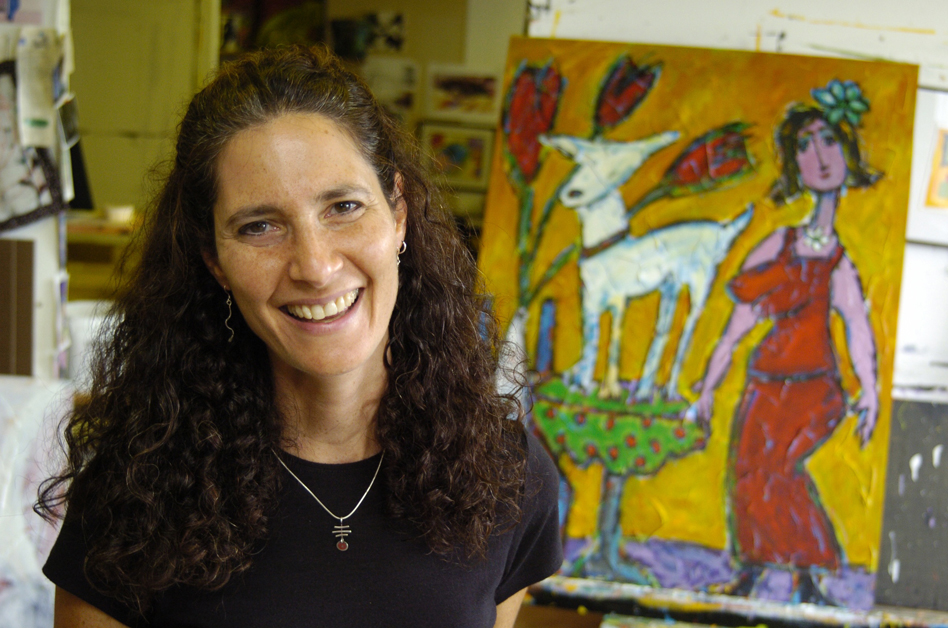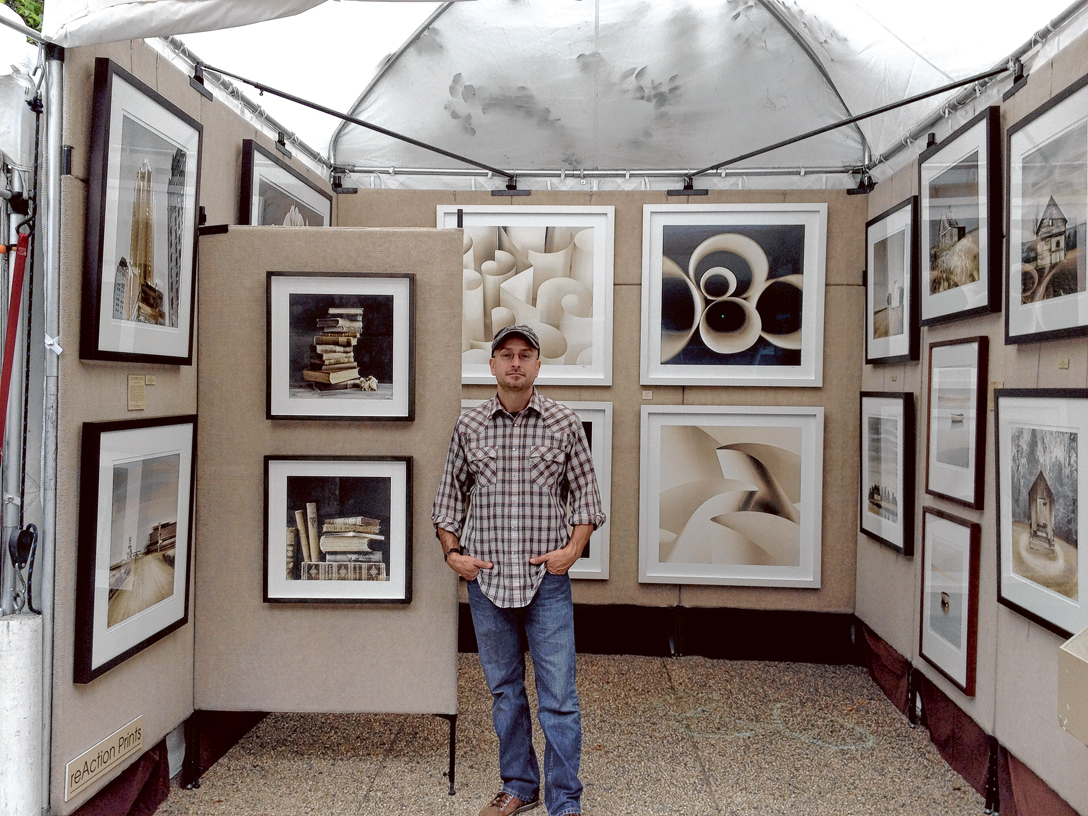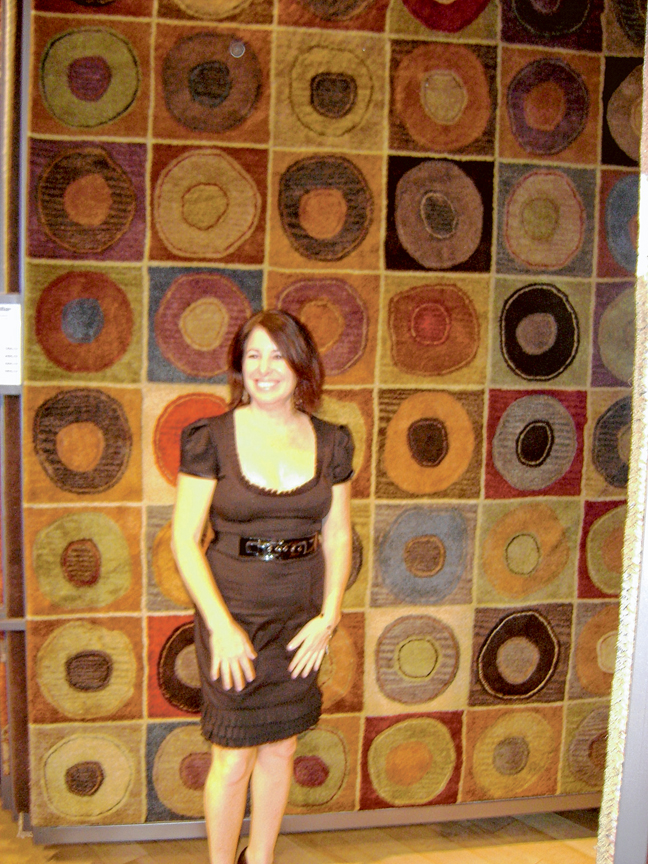When the 4 Bridges Arts Festival returns this month to the Tennessee Pavilion for its 13th year, more than 145 artists from 32 states will be in town, bringing paintings, pottery, sculpture, jewelry, fabric, wood, metalwork, mixed-media assemblages and photography.
But have you ever wondered how art fairs really work? How the artists became artists in the first place, why they come all the way to a show in Chattanooga from places like Minneapolis, or Chicago, or even California?
The answer: they get there in all kinds of circuitous ways, for all kinds of reasons. Often, they get there by going someplace else first.
Fifteen years ago I was in my mid-thirties, a psychological examiner and a budding potter, when I decided to try an outdoor show. I applied and was accepted to the Dalton outdoor art festival, and with excitement and trepidation, I packed up about forty pots, borrowed a show tent from an artist friend and set up on the street.
It was late August. For eight solid hours I talked about how I made my pots, why I painted them with the images I did, how long it took me to learn and what the rewards and challenges were. I sweated through my clothes, took money, made change, ate standing up, thanked people for looking, then repeated the whole process the next day. By the time it was over with I had a sore throat, a merit award and more than $1,000 in my pocket.
I was ecstatic.
Not long afterward I drove to Birmingham and did it all again, returning home with $1,400. Again I was ecstatic, but I wondered: what would happen if I broadened my reach? At my husband's urging I took a chance on a small weekend show in a western suburb of Chicago. Two days and $10,000 richer, I was more than ecstatic. I was sold on art fairs as a career. So was my husband: he left his counseling job to become a fine art photographer, and joined me on the circuit.
Thus began an odyssey of art show adventures that has taken us to cities as diverse as Montauk, New York, Key West, Denver, Minneapolis, Kansas City, Palm Springs and Tupelo, to name just a few. Over the course of fifteen years we have shivered, sweated, survived monsoon-like rains, had our tents destroyed by tornadoes, had artwork stolen, suffered food poisoning, the flu, broken bones, low customer turnout, poor sales, strange questions, blatant insults and dogs urinating in our booths. But we have also enjoyed stellar weather, the thrill of working for ourselves, heart-swelling compliments, offers of gallery representation, stellar sales, and the opportunity to follow our passion, to set our own schedule, to travel and to make friends all over the country.
And that's just our art fair story. If you want to hear other stories, head out to the 4 Bridges Arts Festival at the Tennessee Pavilion and talk to the artists about what they do, why they do it and what the challenges and rewards are. Sure, you might expect that some artists have MFAs while others are self-taught, but you might not realize that some have had long, professional careers in jobs completely unrelated to art. We have an artist friend who was a biochemist and another who was a trombone player in the Russian army. We know artists who were first pharmacists, social workers, engineers and MDs.
For more information on the Arts and Education Council's Celebration of Southern Literature, April 18-20, visit southernlitalliance.org.
Beverly Hayden, an award-winning, local full-time mixed media artist who will be exhibiting at 4 Bridges this year, used to be a lawyer. "I quit practicing law because I did not feel my practice was growing my soul or allowing me to make the kind of positive difference in the world that I wanted," Hayden describes. "And it did not fulfill my inherent need to create. Becoming an artist allowed me to satisfy all of those needs."
For more information about 4 Bridges Arts Festival, Ap ril 13-15, visit 4bridgesartsfestival.org.
Getting the Show on the Road
Below are answers to just a few of the most common questions artists get from patrons at a show.
How did you get in the show? Did you just sign up? The better art fairs are juried, which means that artists must submit four to five images of the work they intend to sell at the festival, plus one image of their booth setup. The application process is digital and very specific - the images must be a certain size and of excellent quality. And while you may think it's advantageous for an artist to show the jury a range of styles and techniques (the artistic equivalent of "Look Ma, no hands!") this is actually the worst thing an applicant can do. Jurors are looking for focused artistic vision, cohesiveness of work and a unified, professional presentation.
Most shows retain two to four jurors for the job of selecting artists; this year's 4 Bridges jurors were Joe Helseth, director of Chattanooga State's Outdoor Museum of Art; Stephen Wicks, the Knoxville Museum of Art Barbara W. and Bernard E. Bernstein Curator; and Jenny Moore, associate director of Handmade in America.
While there were no hard and fast category quotas enforced, 4 Bridges director Kathryn Dunn emphasized that the jury did make a concerted attempt to create a balanced, diverse show, even down to the waiting list. "We were very clear that we wanted both the accepted artist list and the wait list to reflect the highest and the most consistent judging standards," she says, "so that when we pulled from the wait list, the quality would be as high as the first-tier artists accepted into the show."
And competition is high: this year, Dunn says, there were approximately 600 applications for the 145 spaces. (Artists applying to shows in larger cities often face even stiffer competition; at the Cherry Creek festival in Denver last year, 3,600 applicants competed for 230 spaces.)
The cost? Artists pay a non-refundable jury fee between $30 and $50 per show. If they are selected to exhibit, a 10'x10' booth space runs an average of $400 to $1,200 and up, depending on the show.
And the white tents, walls for hanging art, and display tables? The artists bring those with them.
Do artists travel together, like the circus? Most artists have gotten this question at some point, and I can see why. Hang around a show for very long and you'll notice that many of the artists know each other. Their white tents are identical (a show rule). Head out to the artist parking area and you'll see a sea of white cargo vans. But contrary to how it appears, artists travel - and live - independent of one another.
Do you sleep in your tent? While we've known artists who save on hotels by sleeping in an RV or campground, most of us stay in hotels just like other people who travel for business.
Did you make that? Why is it so expensive? Art festivals are all about original, handmade art. Show promoters work very hard to assure that mass-produced (also known as buy-sell) work does not make it into their show. Because the work is handmade, one-of-a-kind, or a limited edition, it costs more. You're paying not only for the artist's vision, but his labor, training, craftsmanship and the ownership of an original piece of art.
Do I have to pay sales tax? The art fair business is like any other business. Artists are required to charge sales tax and to report their income from sales. If an artist offers to "comp" your sales tax, it doesn't mean he's not reporting it; it means he's paying it for you.
There are thousands of art fairs. How do artists decide which to apply to? There are a number of trusted online and published guides which detail the nuts and bolts of shows (jury and booth fee, artists' average sales, ratio of applicants to accepted artists, artist amenities such as free parking, meals or award money), and which also have reviews by artists who have exhibited in the shows. The Art Fair Sourcebook, Sunshine Artist, and Art Fair Insider are a few such guides, which also report a show's ranking (4 Bridges was #62 last year). Artists also rely heavily on word of mouth.
spark ignites passion for art and cultureIt's that time again: spring, yes, but more importantly, time for spark, the re-named, re-visioned HATCH (which was an acronym for history, art technology, culture and happenings). This year the events spanning April 11-21 will kick off with the annual 4 Bridges Arts Festival and conclude with the Celebration of Southern Literature (formerly the Conference on Southern Literature).Spark, which calls itself a "right brain celebration," will be, in its own words, "a celebration of the Chattanooga area's creative culture showcasing a variety of high-caliber events encompassing the best of literature, technology, history, visual arts, performing arts, music and culinary arts." The celebration promises to be a diverse and eclectic talent vehicle with well over 100 events taking place over the 11-day period.For a complete schedule of events, go to sparkartschattanooga.com .
Self-Portrait:
Andrew Sovjani
returning 4 Bridges artist
Easthampton, Massachusetts artist Andrew Sovjani calls himself "a painter trapped inside a photographer's body." His varying bodies of photographic work, which he describes alternately as "transformative images of ordinary paper that explore the subtleties of natural light and line," "photographic monoprints," and "visual haiku," are hauntingly beautiful and stunningly spare. Unlike artists who didn't think about art as a career until after they'd pursued other fields, Sovjani grew up in a family of working artists and actively sought NOT to become an artist by becoming a mechanical engineer and a businessman.
"After a few years trying to escape the artistic pull," he writes in his artist statement, he returned to what he calls his "creative roots." Sovjani's award-winning work has been included in exhibitions throughout the U.S., Europe and Japan, and is in many public and private collections. His image "Paper No. 13" was used on the cover of Primo Levi's Universe, (Palgrave MacMillian 2009).
"I think the biggest challenge is finding the time to create new work and push into new directions when you're spending so much time on the road. I need to be in my studio to try new things. The other challenge is trying to not compromise on your art and ideas when you are also trying to sell something to the general public. And also, I think the jury process has forced a lot of artists to develop very narrow styles and bodies of work that [are] repeated over and over. Picasso would have a hard time getting into a show these days because of all the styles and mediums he experimented with.
"The upside is that we get an amazing amount of direct feedback on our work...After I learned to develop thick skin, this has really helped me to be able to explain my work better, and good feedback is a powerful motivator."
Self-Portrait:
Mimi Damrauer
returning 4 Bridges artist
This Chicago, Illinois textile artist was also introduced to art at a young age, but didn't pursue it until after she had worked for many years as an event planner.
"I grew up with a very creative mother and sister and art/cooking projects were always going on at our house. I am self-taught. I am inspired always by looking around me...the sidewalk cracks, the way old bricks lay out, the crooked lines of a telephone pole in rural India, the color of the ocean in Costa Rica and the stones on the beach in Italy.
"The main fabric that I use is a cotton muslin that I dye myself. I dye hundreds of colors to get many shades so that my artworks have a lot of variation. The printed fabrics...I travel far and wide to hand-select. My sister is also a fabric designer and I use bits of her commercial fabric. Any fabric that I incorporate into my art must be very special! I then handcut all of my pieces to give a wonky feel. I see the perfection in imperfection."
Damrauer takes pleasure in meeting her customers, building relationships and getting feedback on her work. "I love what I do...it does not feel like a job to me. I really enjoy the whole business - creating work, selling and marketing it. Seeing my work develop is incredible. I truly enjoy making my art and I hope that my work makes people happy when they see it."
She is especially proud of her work with Crate and Barrel. Her "Sebastian" rug, which was based on one of her "Drunk Circle" textile collages, was one of the store's best sellers for two and-a-half years.



